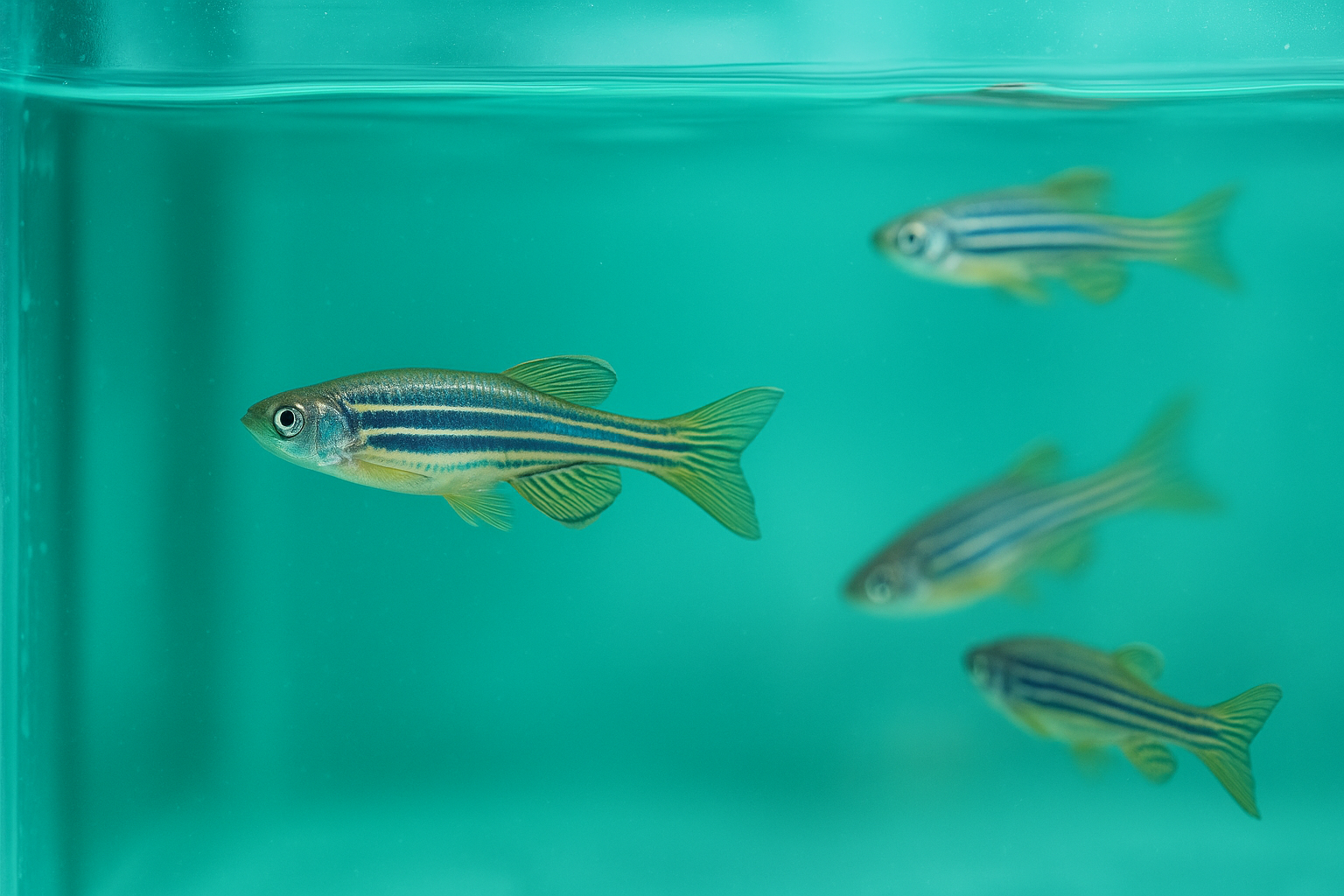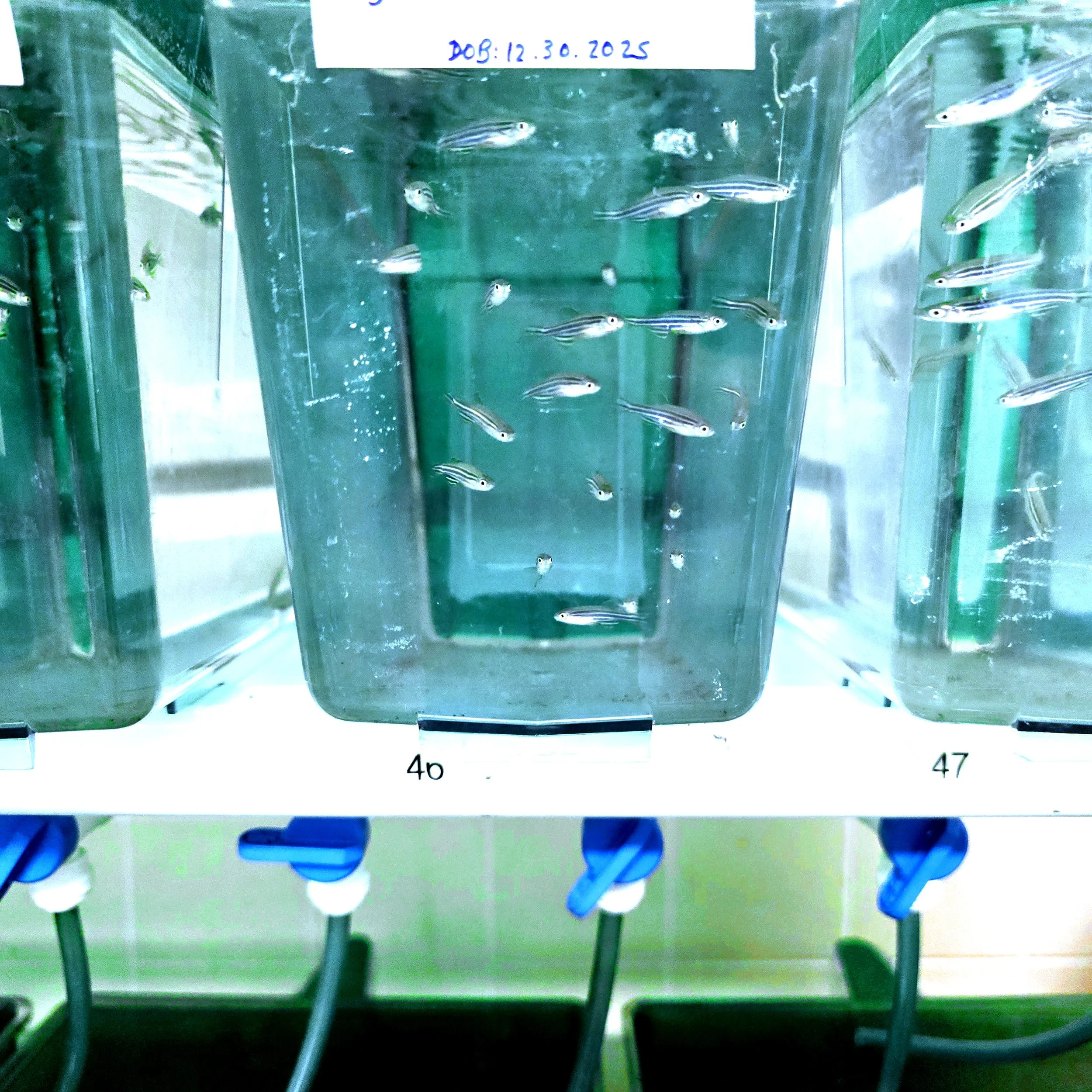Zebrafish Husbandry and Welfare: Best Practices for Optimal Research Outcomes
As zebrafish (Danio rerio) continue to play a vital role in biomedical and genetic research, ensuring their welfare through proper husbandry practices is essential, not just for the animals' well-being, but also for the reliability and reproducibility of scientific data. At Aquaneering, we are dedicated to supporting institutions worldwide with aquatic housing systems that foster health, compliance, and scientific excellence.
Why Zebrafish Welfare Matters in Research
Zebrafish have become a cornerstone of translational research due to their genetic similarity to humans, transparent embryos, and rapid development. However, like all research animals, they require thoughtfully designed environments and consistent care to thrive.
Animal welfare isn’t just a moral obligation—it directly impacts experimental outcomes. Stressors such as poor water quality, overcrowding, or inadequate feeding can lead to immune suppression, abnormal behavior, and skewed data. Ensuring optimal zebrafish husbandry improves both reproducibility and credibility in research.
Core Principles of Zebrafish Husbandry
At the heart of zebrafish care is the Three Rs: Replacement, Reduction, and Refinement. The principle of Refinement—minimizing distress and improving living conditions—is particularly relevant when discussing husbandry standards.
1. Water Quality: The Foundation of Health
Clean, stable water conditions are the cornerstone of any aquatic housing system. Essential parameters to monitor and maintain include:
• Temperature: 28.5°C ± 1°C
• pH: 7.0–7.5, with minimal fluctuation
• Conductivity: 300–1500 µS/cm, depending on institutional standards
• Ammonia, Nitrite, Nitrate: Non-detectable to low levels
• Dissolved Oxygen: > 6.0 mg/L
• Flow Rate: Gentle enough not to stress the fish, yet sufficient for filtration
Aquaneering’s recirculating filtration systems are designed with biosecurity and precision in mind, supporting consistent parameters through mechanical, chemical, and biological filtration—all within a compact, user-friendly design.
2. Housing and Tank Design
Choosing the right housing system for your zebrafish facility is more than just space management. It's about designing an environment that replicates natural behavior, reduces aggression, and supports breeding.
Best practices include:
• Tank Size Variety: Use appropriately sized tanks (1L, 3L, 5L, or larger) to accommodate different life stages and experimental needs.
• Stocking Density: Recommended density is 5 adult fish per liter. Overcrowding leads to aggression and stress.
• Tank Material: Use clear, autoclavable polycarbonate or similar materials for durability and visibility.
• Modular Racks: Modular, Build-As-You-Grow™ systems provide scalability without disrupting current housing.
Aquaneering’s systems offer customizable tank layouts and under-rack sumps for easy maintenance, with integrated options for dosing and environmental control.
3. Light Cycles and Environmental Enrichment
Zebrafish are diurnal animals whose biological rhythms are closely tied to light and dark cycles.
• Photoperiod: A 14:10 light: dark cycle is recommended.
• Light Intensity: 200–400 lux at tank surface; avoid direct sunlight.
• Enrichment: While not universally implemented, visual barriers or patterned tank backgrounds can reduce aggression.
Environmental control systems by Aquaneering help standardize light cycles across the rack, minimizing stress and ensuring consistent experimental conditions.
4. Feeding Regimens
Proper nutrition is crucial for growth, reproduction, and immune health.
• Larval Diets: Start with paramecia or rotifers; transition to dry feeds by day 7–10 post-fertilization.
• Adult Diets: Offer a combination of high-quality dry feed and live feed (e.g., Artemia).
• Frequency: 2–3 feedings per day is ideal; avoid overfeeding, which can degrade water quality.
Automated feeding systems can standardize nutrition while reducing labor, a feature supported by many of Aquaneering’s integrated system options.
5. Health Monitoring and Biosecurity
A proactive health program is vital for disease prevention and colony longevity.
• Quarantine New Arrivals: Always isolate new fish for a minimum of 2–4 weeks.
• Routine Health Checks: Monitor behavior, body condition, and spawning rates.
• Pathogen Screening: Periodic testing for Pseudoloma neurophilia, Mycobacterium spp., and parasites.
Aquaneering housing systems support rigorous cleaning and sterilization protocols, including easy-to-remove tanks and modular parts for thorough disinfection.
The Role of Aquaneering in Advancing Zebrafish Research
For over 35 years, Aquaneering has partnered with leading research institutions worldwide to provide state-of-the-art aquatic housing systems tailored for zebrafish, Xenopus, killifish, and other aquatic models. Our team of engineers, biologists, and service technicians understands the critical link between animal welfare and scientific progress.
From small academic labs to large-scale genome institutes, our zebrafish systems are designed with:
• Precision environmental control
• Customizable tank configurations
• Scalable rack options
• Biosecure, low-maintenance filtration
We’re proud to support the zebrafish research community in refining care standards and creating systems that help science thrive.
Final Thoughts: Prioritizing Welfare = Better Science
Zebrafish husbandry isn’t just a compliance requirement—it’s a strategic foundation for high-quality, reproducible science. By investing in proper housing, environmental control, and health monitoring, researchers can unlock the full potential of their aquatic models.
At Aquaneering, we’re here to help you create research environments where zebrafish thrive—and where discovery begins.


